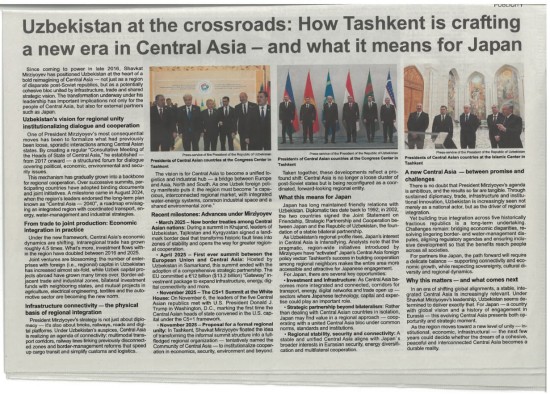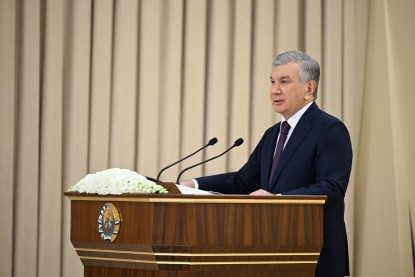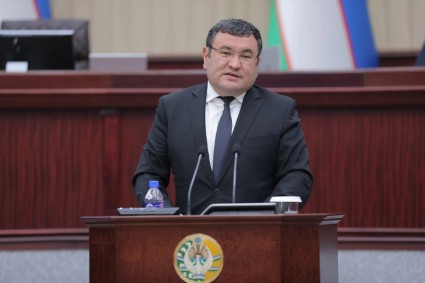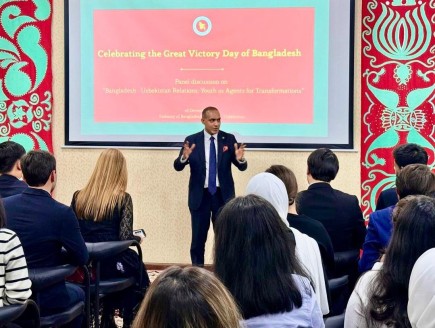As the UN marks the International Day of Family Remittances on Thursday, there is concern that economic contraction and job losses in Russia - likely to now rise further as a result of sanctions imposed since the invasion of Ukraine - are already having an impact on remittance-dependent communities in Central Asia, according to experts with the International Organization for Migration (IOM).
In his message marking the international day, the UN Secretary-General António Guterres, said that it was important to accelerate efforts to bring everyone online, "while investing in digital tools and financial inclusion for all. The cost of remittances must be brought close to zero to help families manage their obligations efficiently".
The countries of Central Asia retain their Soviet-era socio-economic and political ties with the Russian Federation. Migration, and in particular remittances, is at the center of this intricate, historical relationship, say Hyo Jeong Jung, IOM Labour Migration Specialist based in Kyrgyzstan, and Michael Newson, Senior Regional Labour Mobility and Social Inclusion Specialist, based at IOM in Vienna.
Russia’s geographical proximity, cultural familiarity, and shared history with Central Asian countries, as well as shared bureaucratic systems, has made it the most popular destination for Central Asian migrants.
4 million workers in Russia
Currently, there are approximately four million workers from Central Asia working in Russia: around one million from Tajikistan, a similar number from Kyrgyzstan, approximately two million from Uzbekistan, and some 200,000 from Kazakhstan.
Migrant workers from Central Asia work primarily in the construction, transportation, agriculture, and service sectors (both seasonally and in longer-term) as well as in higher skilled occupations.
The sanctions placed on the Russian Federation in response to the invasion of Ukraine are expected to have a severe impact on the Russian economy and labour market.
2 million jobs may go
Up to two million jobs may be lost, with unemployment expected to rise from around 4.4% to 7.8%, according to data compiled by IOM.
“A fall in remittances from Russia will certainly have a detrimental impact on the region’s remittance-dependent economies,” noted Renate Held, Director of IOM’s Vienna Regional Office.
“While the majority of migrant workers have indicated a preference to remain in the Russian Federation for the time being, we are likely to see steadily increasing returns should the economy take a turn for the worse.”
Feeling the effects
Given Central Asia’s dependence on the Russian economy, migrants and their families have already begun to feel these effects, mainly through increased unemployment but also in a reduction in remittances.
In the first quarter of 2022, 60,000 Tajik and 133,000 Uzbek migrants returned from Russia to their home countries, putting further strain on labour markets.
In 2020, remittances to Kyrgyzstan and Tajikistan accounted for 31 per cent and 27 per cent of GDP respectively, comparable to or even larger than the countries’ export value of goods and services.
Steep decline forecast
In 2021, remittances from Russia accounted for more than 55 per cent of total remittances transferred to Uzbekistan, and 51 per cent of remittances to Kazakhstan. These countries are now expected to see a decline of 21 per cent and 17 per cent respectively in overall remittances compared to last year, according to independent data cited by IOM.
Projections, however, are not set in stone. In March, remittances to Kyrgyzstan decreased by 28 per cent, compared with last year.
In contrast, in Uzbekistan, labour migrants sent a record $1.07 billion in April, almost twice as much as the previous year. Despite this increase, the Central Bank of Uzbekistan noted in April that the volume of remittances will be 18-25 per cent lower.
The volatility caused by the crisis in Ukraine and sanctions on Russia mean that the remittances flow to Central Asia should be closely observed, said IOM, as sharp declines can result in increased and extreme poverty among families of migrants and the communities that depend on them.
Remittances significantly contribute to poverty alleviation, as most Central Asian migrant workers are from poorer rural areas. In Kyrgyzstan for example, remittance contributed to reducing the national poverty rate by 11.1 percentage points (from 31.2 per cent to 20.1 per cent) in 2019.
Few savings
With remittances covering basic consumption needs, many families have no savings to cushion the shocks triggered by a fall in money coming from overseas. The World Bank has projected that the poverty rate in Kyrgyzstan could reach 38 per cent this year, partly as a result of lower emigration and declining remittances.
In this light, it is imperative to regularly monitor cash being sent home from Russia, provide livelihood assistance to vulnerable returned migrants and their families, and increase the resilience of migrants and their families through enhanced financial literacy and inclusion, argue the IOM experts.














